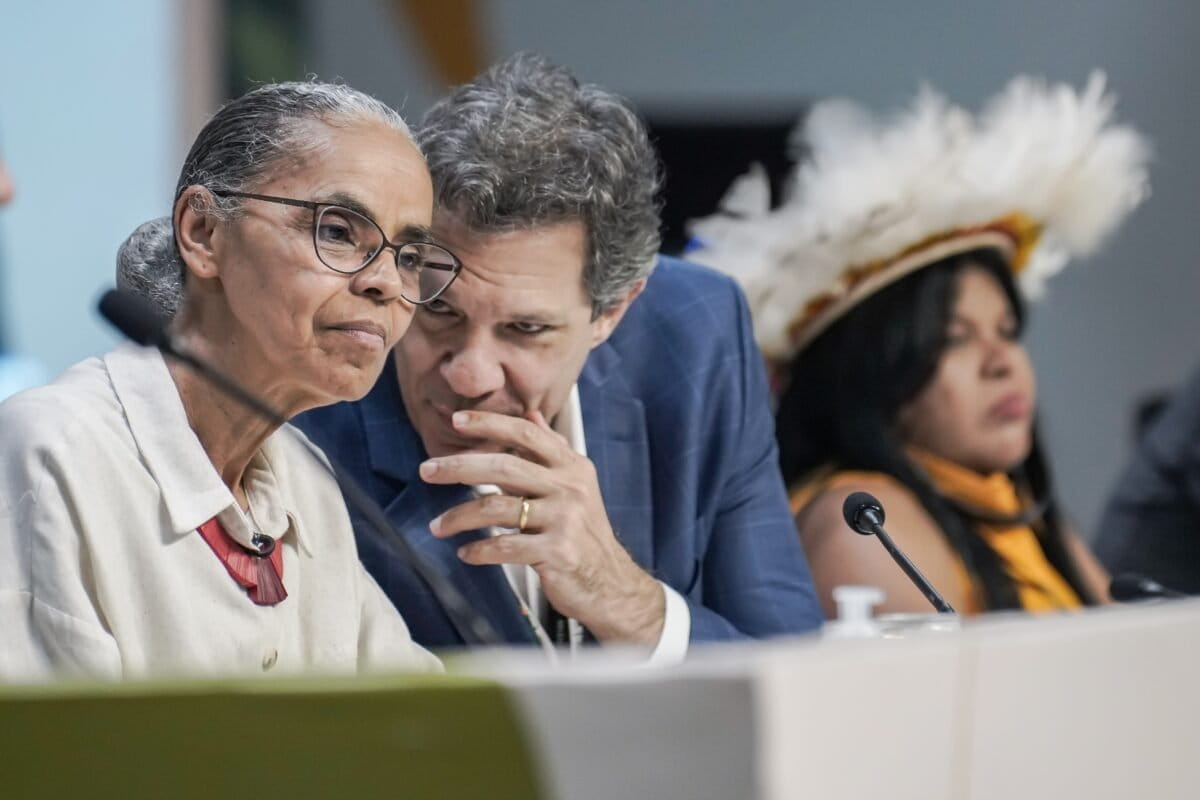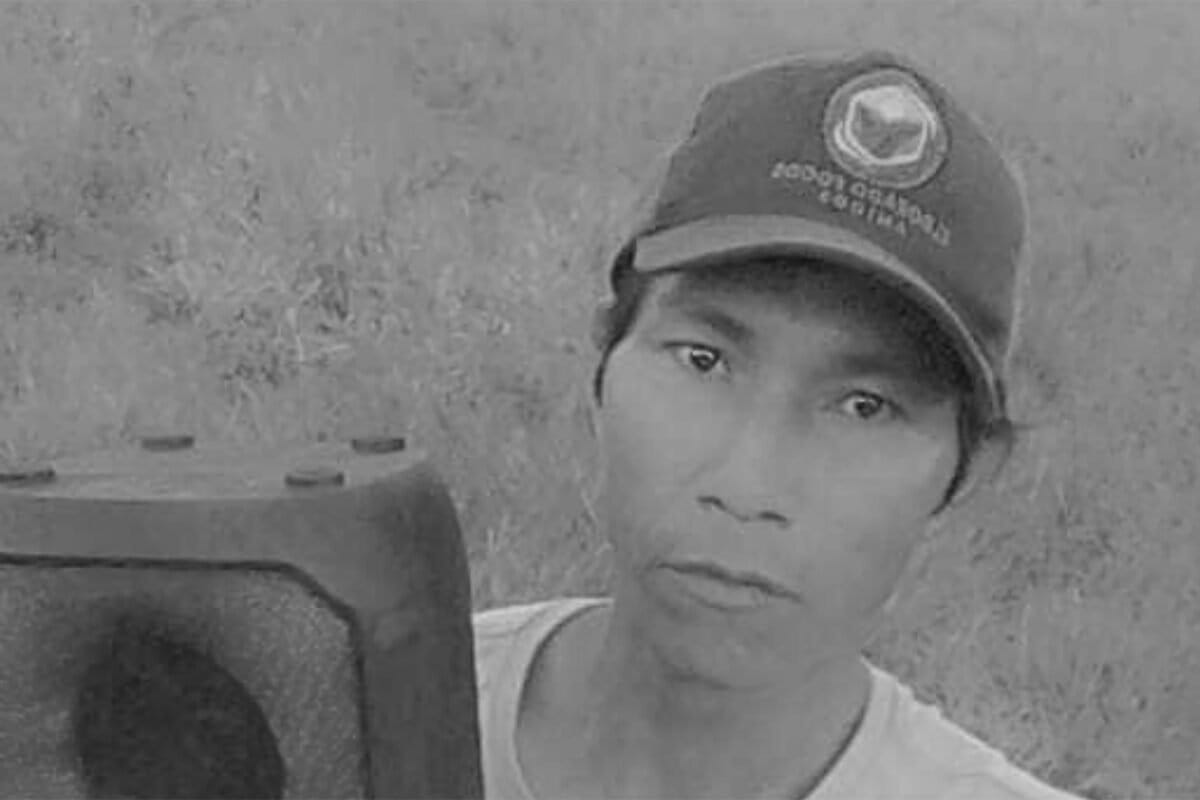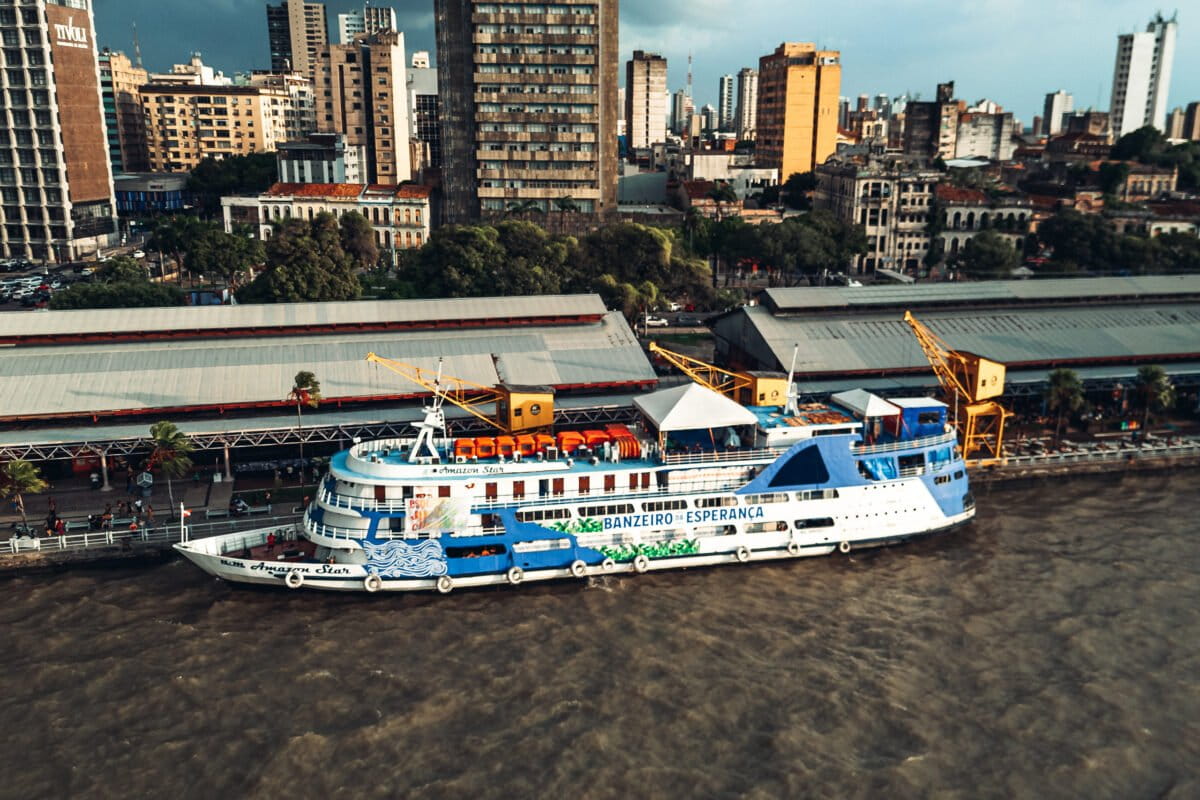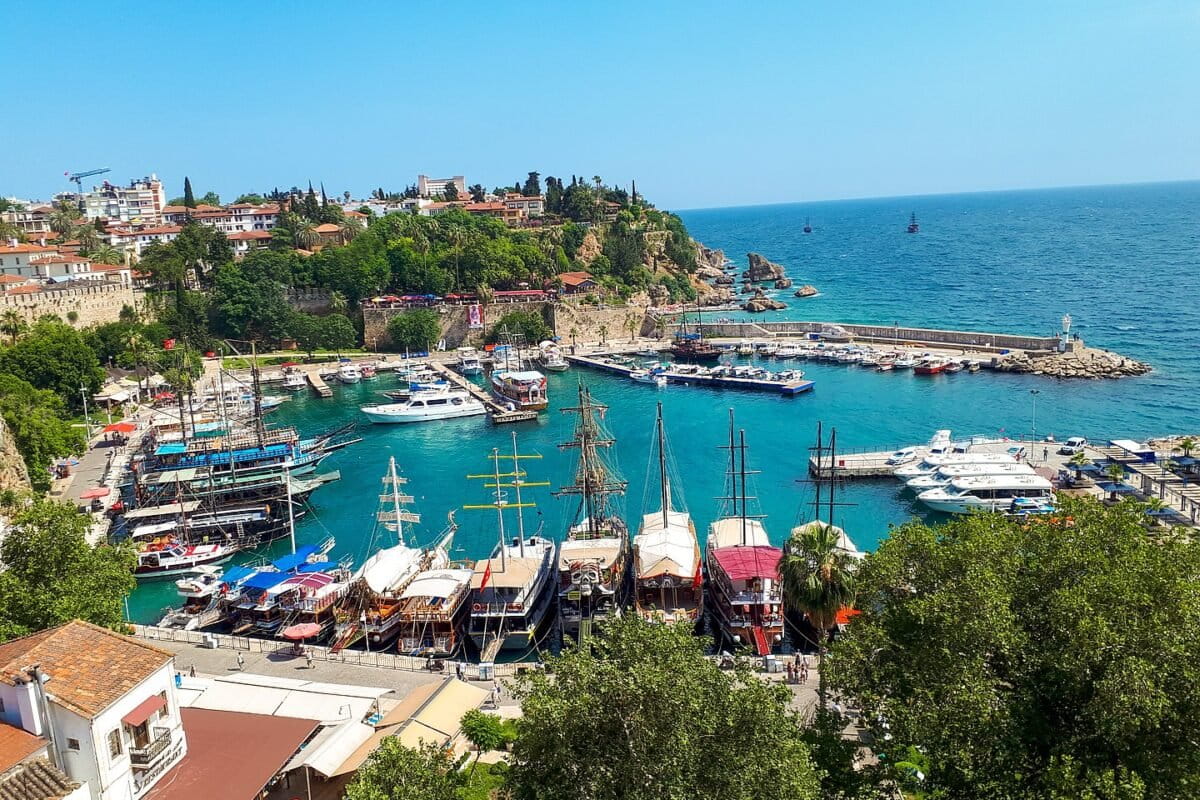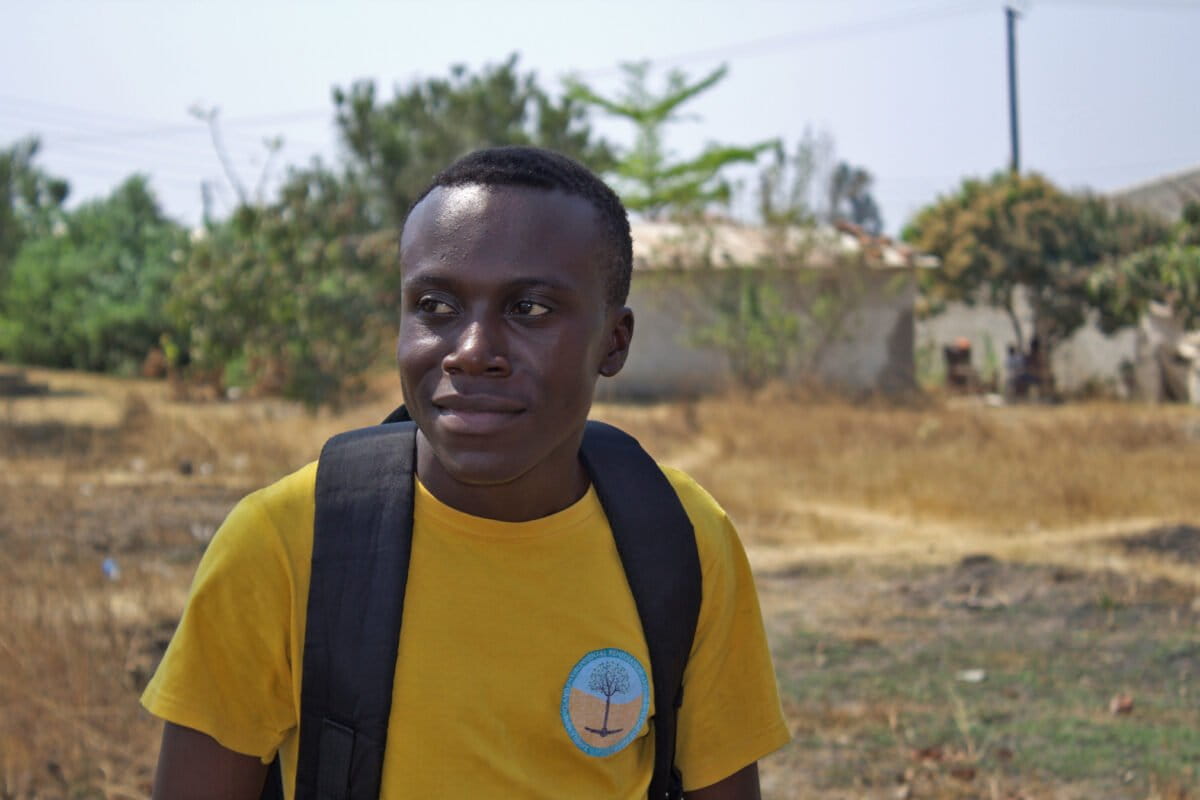- Sapariah “Arie” Saturi grew up in West Kalimantan amid recurring forest and peatland fires, experiences that shaped her understanding of Indonesia’s environmental crises.
- After beginning her journalism career in Pontianak in the late 1990s, she joined Mongabay Indonesia at its inception and helped build it into a national environmental newsroom.
- As managing editor, she oversees a dispersed team of more than 50 reporters, beginning her days before dawn to edit stories, coordinate coverage, and guide investigations across the archipelago.
- Her commitment is grounded in independence, empathy, and the belief that environmental journalism can help communities, influence policy, and deepen public understanding of Indonesia’s overlapping crises.
Indonesia’s environmental issues often feel too vast to take in at once. A nation said to have more than 17,000 islands, it contains the world’s third-largest tropical rainforest and one of its busiest commodity frontiers. For many Indonesians, the story of modern development is told not in charts but in the air they breathe. Some remember childhoods spent under yellowed skies, the sting of peat-fire smoke seeping through school windows, the sweet-acrid smell that clings to clothes long after the fires fade. Others know the slow rise of the sea by the way the ground squelches underfoot in places where it didn’t use to. Or the way Jakarta’s air tastes metallic on mornings when the pollution monitors glow red.
For Sapariah “Arie” Saturi, these scenes are not abstractions. They are a biography. She grew up along the Kapuas River in West Kalimantan, a region shaped by the uneasy coexistence of forest, peatland, and the ambitions of logging firms, palm-oil giants, and mining companies. Fires arrived each dry season in the 1990s, and with them the haze: darkened skies, eyes that burned after a few minutes outdoors, a kind of muffled stillness that settles over the landscape when the smoke grows dense enough to dull sound and color alike. Masks were rare then. Children simply endured.

Today Arie lives in Jakarta, where the problems are different but no less tangible. The capital sinks a little each year, traffic is a consistent source of frustration, and opening a window at the wrong moment brings in a faint chemical tang that lingers in the curtains. So she retreats on weekends to a nearby village, coaxing mint and chilies and anything else that will grow in her pots. A friend once teased her: if Mongabay is “online” environmentalism, her garden is the offline version. She didn’t disagree.
What distinguishes Arie is not just the experiences she carries but what she has done with them. She has been a journalist since the late 1990s, when Indonesia’s media landscape was exploding after the fall of Soeharto. As a young reporter in Pontianak, she cycled through local newsrooms, wrote late into the night, and learned the craft the slow way—by doing, failing, rewriting, and reading everything she could find at a 24-hour magazine stall. Her path has been steady, almost stubborn, in its commitment. “Tak bisa ke lain hati,” she says. Can’t change her heart.
She joined Mongabay Indonesia in its earliest days, when the entire bureau was small enough to fit around one dinner table. Back then, few Indonesian outlets treated environmental reporting as anything more than filler. Deforestation rarely made front pages unless it involved political intrigue. Conflicts between Indigenous communities and companies were politely ignored, especially when the companies bought advertising space. Arie saw the gaps widening. Mongabay, with its promise of independent coverage and no owners demanding soft-touch stories, felt like an opening.
Now she is Mongabay Indonesia’s managing editor, running a sprawling, virtual newsroom of more than 50 reporters scattered across the archipelago. Her days begin before dawn—edits at 4:00 a.m., a quick scan of WhatsApp groups, a school run, and then another round of edits over coffee. Long investigative pieces require days of patient checking; shorter ones she dispatches quickly. She toggles between Zoom rooms, Telegram channels, and the occasional in-person meeting, stitching together a daily flow of stories that move from peatlands in Sumatra to nickel mines in Sulawesi to coastal villages in Maluku.
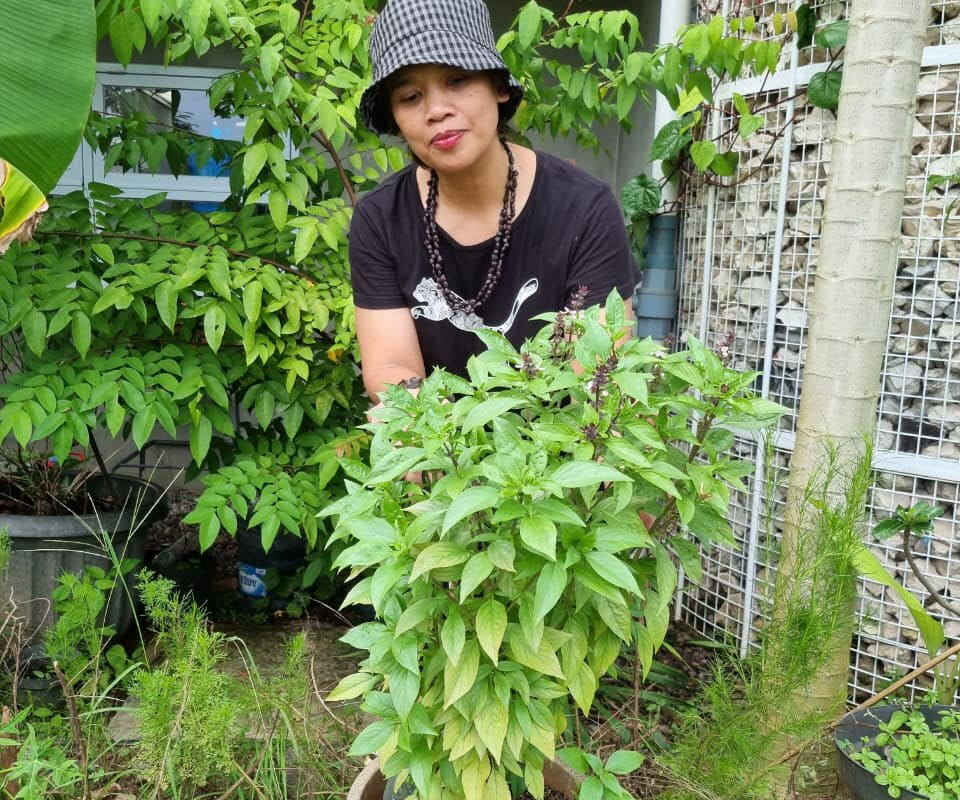
Journalism, for Arie, is less a profession than a way of standing up for people who usually go unheard. She has watched communities defend customary forests, farmers battle loan sharks, and small islands fend off mining companies. Sometimes the coverage leads to policy changes; other times it simply helps residents feel seen. Both matter.
Her conviction has shaped by long exposure to the slow violence of environmental harm. It is also unyielding. A journalist, she insists, may stand with ordinary people—but must still remain independent. Facts first, always. And keep learning. The world is messy; journalism should admit as much.
What follows is a conversation with Arie about how she came to this work, what sustains her, and what she has learned after more than two decades documenting the uneasy relationship between Indonesia’s people and its land.
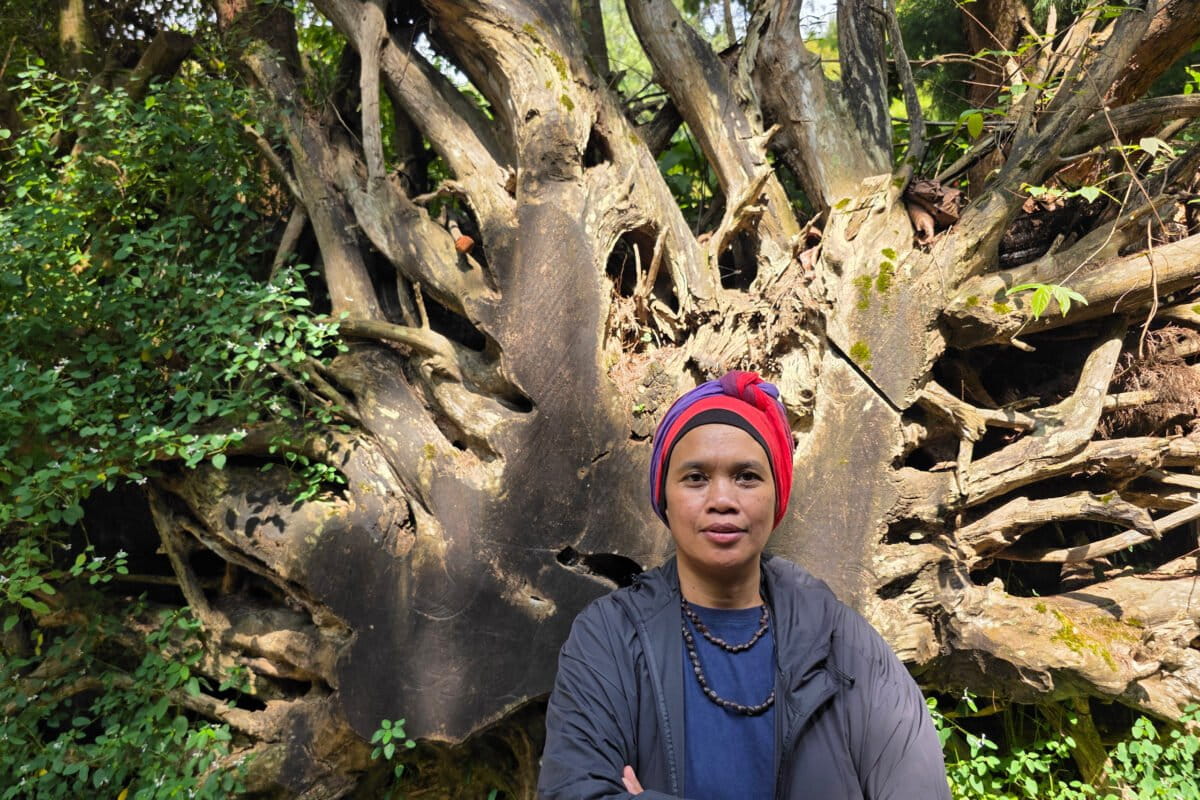
An interview with Sapariah Saturi
Mongabay: Please introduce yourself and your position at Mongabay.
Sapariah Saturi: My name is Sapariah Saturi. People usually call me Arie. I was born, raised, and went to school from primary school to college in Pontianak, West Kalimantan. I come from an ethnic Madurese family. My family has a farm in Punggur, about 20 kilometers, west of Pontianak.
West Kalimantan is blessed with the Kapuas River, the longest river in Indonesia, and forests that have been almost completely destroyed due to timber companies, palm oil plantations and mining activities. To this day, the remaining forests are still under threat.
Every year since the 1990s, the region has been plagued by forest and land fires.
West Kalimantan is a province with peatlands and one of the largest oil palm plantations in Indonesia.

Since childhood, I have experienced the haze from forest and land fires. The sky was dark, and the surroundings were filled with smoke. My eyes stung and my nose itched when I breathed it in. There were no masks at that time.
For more than 20 years now, I have been living in Jakarta, the capital city of Indonesia, whose coastline is sinking due to land subsidence and tidal flooding.
Jakarta is a massive metropolitan city with more than 20 millions of people and severe traffic jams every day. Air pollution seems endless. I don’t even dare to open the windows at home because when I check the air pollution detector, it is often ‘red’, which means it is unhealthy.
But that’s Jakarta, full of problems, but Jakarta also provides many economic opportunities, luring people to migrate.
On weekends, I choose to stay in a village in a Jakarta suburb. I hope to get a little better air and be able to grow a variety of plants that I like. Not in a large garden, but in pots.
Gardening is one of the most enjoyable and fulfilling activities amid the many negative stories about Indonesia and the world, which are currently experiencing a multidimensional crisis.
I also garden in Jakarta, but of course in a more limited space.

I try to garden without using harmful substances such as fertilizers or pesticides. I use manure, as well as compost from household waste and leaves around my house.
A friend of mine said, “If Mongabay is an online media outlet that publishes articles on environmental issues, then my mini garden is an offline environmental practice.”
I also enjoy cooking. I cook anything—food, drinks, cakes, herbal medicine—whatever I want. Cooking and experimenting new recipes is also a fun activity for me. It can be a means of healing and relaxation.
My family supports me completely. Our small family is, you could say, a family of journalists. My husband, Andreas Harsono, is a journalist, working for Human Rights Watch. I am a journalist, as is our eldest son, Norman Harsono, a journalist at Bloomberg. Only the youngest, our daughter Diana, is still in school. Who knows, maybe she’ll become a journalist?
At Mongabay Indonesia, I am currently the managing editor, overseeing the daily news operations of Mongabay Indonesia. Our editorial team has three people and more than 50 reporters from various provinces in Indonesia.
Ensuring that news is produced every day is certainly a dynamic, challenging, and exciting job.
Mongabay: What does your day-to-day work at Mongabay look like?
Sapariah Saturi: Daily routines certainly manage the workflow and ensure that news production continues to run smoothly and that there is good teamwork between editors and journalists.
I also coordinate and communicate with Ridzki R. Sigit, as our country director. Also with the social media team led by Akhyari Hananto, as well as other divisions.
The editorial department must interact with other divisions, such as social media, the youth division, and the analysis department, so that we can work together as a team.
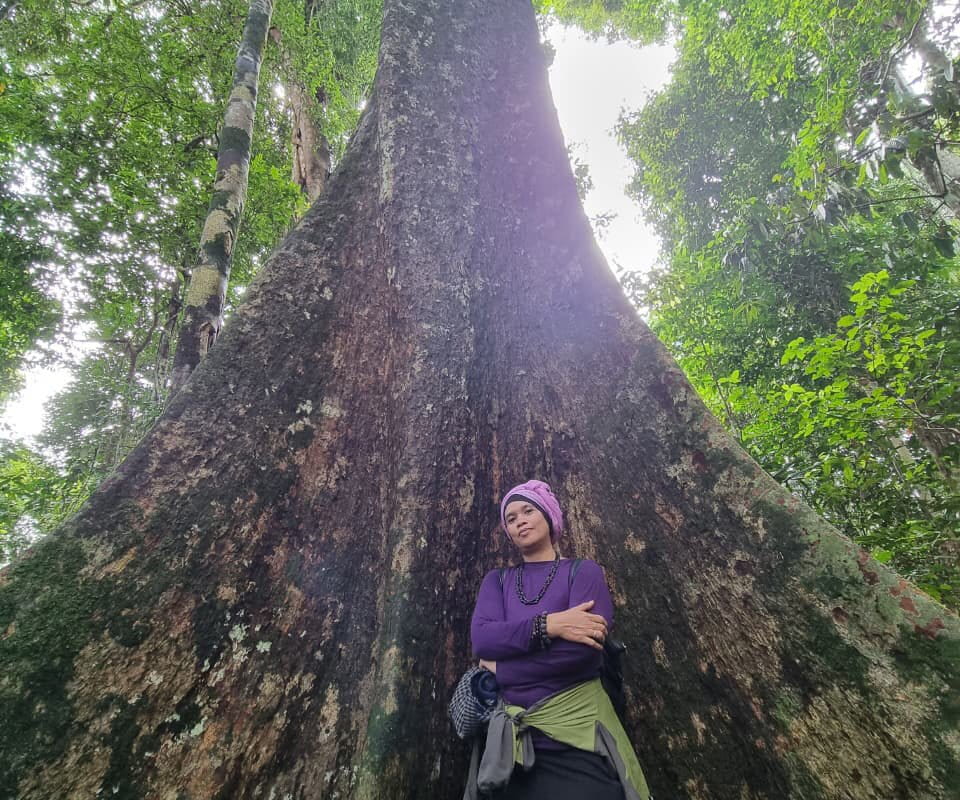
I wake up early in the morning, usually at 4:00 or 5:00 a.m., and open my laptop to continue the editing process that I haven’t finished. Or checking incoming articles from journalists. Also checking and reviewing drafts from editors that will be published in the morning.
While checking on various media platforms, social media, and my communication groups. Some messages from the night before were missed and I started responding.
A short break, taking my daughter to school, about an hour. Arriving home around 8:00 a.m, having coffee while continuing to edit the article. If it’s a short article, it can be done quickly. If it’s an in-depth or investigative article, it takes several days for the editing and checking process.
When checking in-depth articles, I need to take a break after several hours. Change the topic. Open other articles, usually looking for short ones, if there are any featured ones that are lighter.
Once the short articles have been checked, they are ready to be drafted for publication.
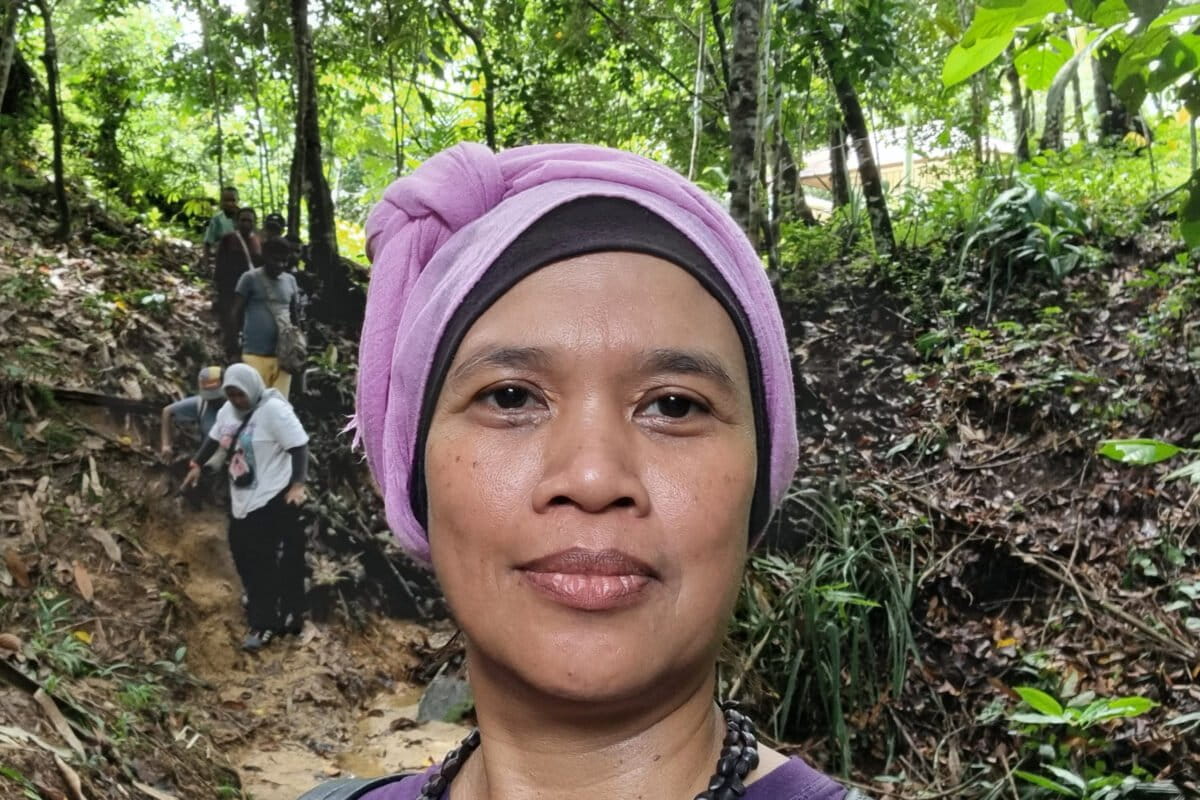
While checking the articles, we also coordinate with the editors on the day’s agenda. This includes the agenda for journalists who will be covering various events, as well as the articles we plan to develop.
We also confirm with the editors who will work on issue A and who will work on issue B. We communicate and coordinate with the editors and directly with the journalists who will be in the field, as well as ask about their progress in the field.
Because Mongabay is a virtual office, we do this using various available online communication platforms. If a direct phone call is necessary, we use the phone or hold meetings via Zoom, Gmeet, and others.
For communication and coordination, my schedule is flexible—morning, afternoon, evening, or night. Though sometimes I miss emails or messages on my phone because I overlook them or they go unnoticed. Sorry…
If it’s important or urgent, I suggest they call directly.
For me, communication and coordination are most important. They must be smooth. When there are things that need to be done, they can be done quickly.
At Mongabay, it’s not just about the routine of producing news, but also networking and collaborating with various parties, including fellow media outlets, civil society organizations, academics, researchers, communities, and others.
For me, networking is important for obtaining information and various progress on issues, including opportunities for joint work or collaboration.
If there is a meeting agenda, it usually starts at 9:00 a.m., sometimes offline or online with various parties, such as seminars, or meetings to discuss specific environmental issues. Sometimes I also participate in events or as a speaker or a moderator.
Sometimes I make appointments with fellow media outlets or civil society organizations to discuss various developing issues, or to talk about collaborations and other matters.
I also sometimes meet with Mongabay colleagues from the Greater Jakarta area such as Banten, Bekasi and Bogor.
In between my agenda, I check on news matters, especially reviewing editorials that will be published in the afternoon or evening, or even at night.
Sometimes, if my agenda for the next day will be spent entirely day outside, I check the final draft of articles to be published in the morning before going out, or the night before. So, I can still attend events, and the articles are also finished and ready for publication.
When I get home, either in the afternoon or evening, after a short rest, I would continue checking or editing the journalists’ articles. There were always articles to work on every day. Or checking on the editor story draft. If I finished, they would usually be released that evening, or if not, they would be published the next day, in the morning or afternoon.
Mongabay: What did you do before you joined Mongabay?
Sapariah Saturi: Once I worked at a Jakarta newspaper called Jurnal Nasional. I also worked at Bisnis Indonesia newspaper for about a year.
But I started my career as a reporter and then editor in Pontianak in 1999, working for various media outlets, including about five years at Harian Equator, a subsidiary of the Jawa Pos Group.
I have always been a journalist since my college graduation. For some reason, I was not interested in some offers to become a civil servant or in a company. The world of journalism is full of dynamics and challenges. I enjoy it and it suits me.

I can live anywhere, move locations, but I remain focused on the world of journalism. This is more than just a job for me; it is a calling and a passion.
There is a song by one of my favorite Indonesian singers, KLA Project, titled “Tak Bisa ke Lain Hati” (Can’t Change My Heart).
To be a journalist, I also “tak bisa ke lain hati.”
Mongabay: Why did you decide to get into journalism?
Sapariah Saturi: It started when I was in high school. There was a wall magazine, containing stories, pictures, or photos from students, which we posted on a board. I wrote lighthearted stories, sometimes with pictures.
I then noticed a lot of trash and the roads in Pontianak in poor condition. I wanted to speak up about it. I decided to write for a local newspaper, Harian Akcaya. I wrote a letter to the editor. My letter was published. I received a T-shirt with the newspaper’s logo. I was very happy. It felt like I had become a famous writer at school, ha ha…
When I was studying at Tanjung Pura University, I almost never missed reading the reviews in the Mimbar Untan student tabloid.
While reading, I would imagine, “If only I could write like them.”
Back then, in Pontianak, there were many bookstores, especially those that sold storybooks, magazines, and novels. I rented them because it was relatively more affordable than buying them. Unfortunately, now there are no more bookstores. They have all closed down.
When I was in college, I felt that there were more and more problems, such as haze, forest fires, agricultural issues, and many more, including the economic and financial crisis that led to the resignation of President Soeharto.
In my mind at that time, there was a lot of stuff I could talk about.
After graduating in late 1997, Indonesia was in a state of crisis and the Soeharto regime was falling, after being in power for around 32 years. The era that had previously restricted media freedom became open.
I saw on television journalists and media crews working so hard to provide information about various issues, including the political changes unfolding in Indonesia at the time. My desire to write reignited.
I told myself, “You must try to write. Look for opportunities. Look for opportunities!”
I began looking for opportunities, asking around and buying local newspapers to see if there were any opportunities to join the media. Finally, in 1999, Suara Kalimantan Barat (Suaka), a local newspaper published three times a week, was looking for reporters. I didn’t waste this opportunity. With enthusiasm and zero experience in journalism, I applied for the position. I got the job. Hooray.
That’s how I started working in the media while learning to write. Every night at 12:00 a.m., after finishing the daily news reports, there was a writing training session. It ended at 1:00 or 2:00 a.m., and then I would go home.
On the way home, I would stop by a 24-hour old magazine store to buy magazines such as Tempo, Gatra, Intisari, D&R, and other magazines and tabloids. I would bring them home to read and learn.
Back then, there was no luxury of searching and learning from the internet. I was still using the Wordstar system computer at the office, with that blue screen.
Learning by doing. That’s what I did. Until now, I keep learning. Learning never ends.
Mongabay: Why do you care about the issues Mongabay covers?
Sapariah Saturi: As far as I know, environmental issues such as deforestation, forest and land fires, river pollution, haze, flooding, damaged roads, and conflicts between communities and companies have been around for a long time.
However, during my time working in mainstream media, the articles were written in a limited manner and lacked depth. In fact, I sometimes wondered which page these articles would be published on. There was no environmental section, as if there was no space for these issues.
Not to mention that in the mainstream media, journalists sometimes cannot write freely and openly. For example, journalists cannot write about conflicts between indigenous communities and palm oil companies because those companies advertise to them.
Sometimes, we are also stuck because the editors feel that the issues we raise are not interesting. I don’t blame anyone; perhaps they don’t understand this issue or simply don’t view it as a ‘sexy’ topic. Or maybe my knowledge is limited, so the issues I raise are incomplete and seem unimportant.
It could also be due to conflicts of interest or certain other interests. There are many factors.
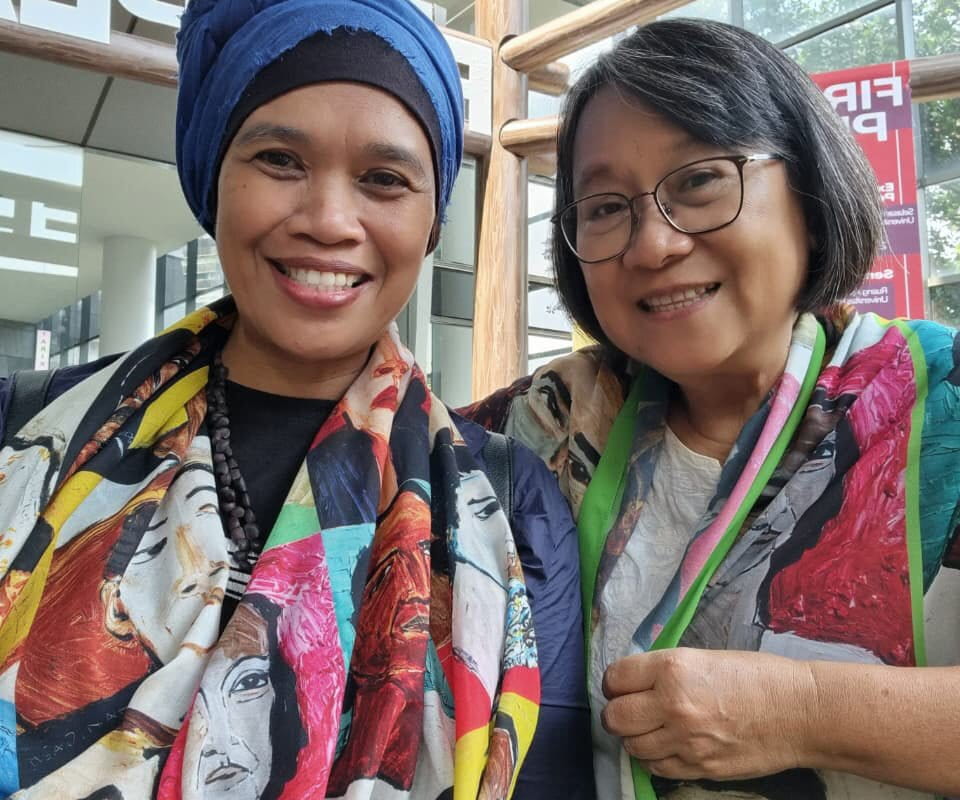
So, when I heard that Mongabay, a media outlet specializing in environmental issues, was coming to Indonesia, I was thrilled. I felt excited, even though at that time I had no idea that I would become part of it.
“This means that there will be a media outlet that will write about the environment seriously,” I thought as I opened the website: www.mongabay.com.
Then very few media outlets wrote regularly about environmental issues, let alone in-depth coverage or investigations. Mongabay arrived as a ray of hope.
I was also determined to apply, thinking that there might be an opportunity to join. Then, I applied, met Rhett Butler, the founder of Mongabay, and was accepted to join Mongabay.
From its early days until a few years later, the Mongabay team consisted of only four people: one director, two editors, and one social media staff member. Contributors were also still few.
I would go out almost every day to cover stories or interviews, and write articles for Mongabay Indonesia. Gradually, more contributors from various provinces began to join.
Now, Mongabay Indonesia continues to grow, with more than 50 contributors from various regions. There are quite a lot of things that need to be handled to ensure the smooth production of news. My time to write has become rather tight. That’s okay. Even though I don’t write regularly, I continue to share my plans and ideas for articles to be used as part of the writing process.
I have been seeing Mongabay Indonesia grow day by day, and I am happy to be a part of it. When Mongabay Indonesia first published that article, it was like giving birth to a ‘baby.’
Now, that ‘baby’ is a teenager. Hopefully, it will continue to grow and be beneficial for the good of the earth and all its inhabitants.
Mongabay: What do you most enjoy about your work at Mongabay?
Sapariah Saturi: At Mongabay, I can write about environmental issues from various angles, in depth, investigatively, and independently. Not all media outlets can do that.
I am happy because at Mongabay, various environmental issues, from deforestation to pollution and problems that people are suffering, including initiatives from communities such as indigenous peoples, rural communities, coastal communities, farmers, and fishermen, can be raised.
Since I joined Mongabay, the atmosphere has been different from that of mainstream media. At Mongabay, I can write about any issue related to the environment and the environment in general, either on my own or by sharing ideas with journalists to write about freely. There are no conflicts of interest with owners or advertisers.
The journalists can write independently. This is very important, and they should be. What we produce is journalism, not propaganda.
Although there is a lot of work, it is enjoyable. Sometimes it is stressful to see the environment being destroyed and communities always becoming victims. But that strengthens my conviction that media outlets like Mongabay are very important.
Working relationships with fellow Mongabay colleagues are also enjoyable. With the bosses, it’s easygoing but serious and professional. I love the camaraderie and egalitarianism at Mongabay.
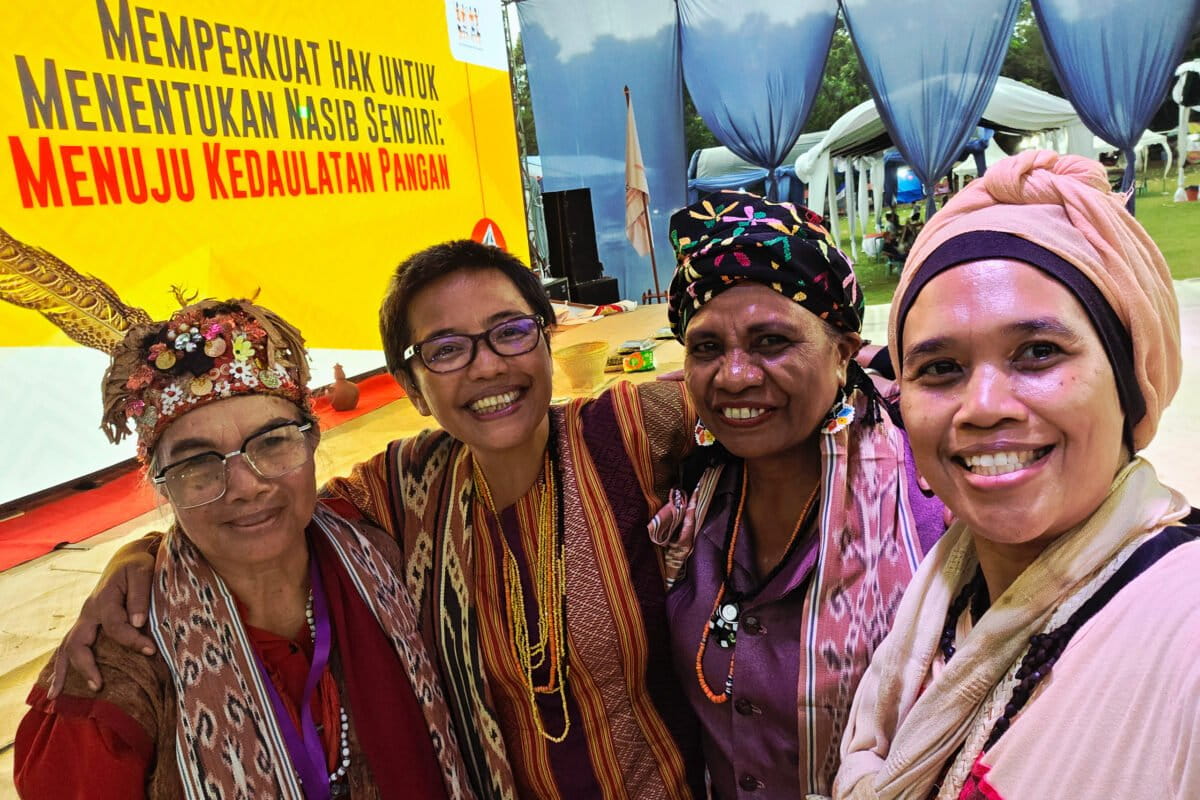
For me, working with Mongabay for more than a decade has been more than just a job. It is my passion. It is also part of the struggle to prevent the Earth from suffering further, and to protect humanity and the biodiversity that depends on it. It may sound cliché, but I believe it.
I believe that the information Mongabay provides can influence people to make changes for the better.
Perhaps not all of the impact will be seen in the short term; some changes will take years to happen, but that’s okay. But the articles or content on Mongabay can become living documents that can be searched, read, and used to strengthen the understanding of all parties.
At the very least, this will help the public to better understand and care more about the environment. Because caring for the environment is the same as caring for our own lives and those of our generations.
Mongabay: What motivates you?
Sapariah Saturi: My family, of course. They support me in following my passion, including working with Mongabay to raise awareness about environmental issues.
Another thing that motivates me is the current crisis. The environment, the damaged and alarming earth, and the communities that are victims of this motivate me to keep going. What I do with my colleagues at Mongabay, raising awareness about various environmental and community issues, is very important.
Mongabay: What are you most proud of when it comes to your work?
Sapariah Saturi: Honestly, I’m really hard-pressed to answer that, because there are so many. Being able to join Mongabay is already a pride in itself. In this environmental media outlet, I can write both independently and with the Mongabay team about various environmental issues. We strive to produce journalistic news, not propaganda or commissioned pieces. This is a source of pride.
Likewise, the response or impact on readers from even small things, let alone big ones, also makes me proud.
Small things like when I wrote a feature about a local community that was trying to protect their forest by harvesting what was in the forest and also farming. But they faced various challenges and problems. Some made palm sugar, but their cooking facilities were small and limited. There are also farmers who are in debt to loan sharks because growing corn requires money to buy seeds and for maintenance.
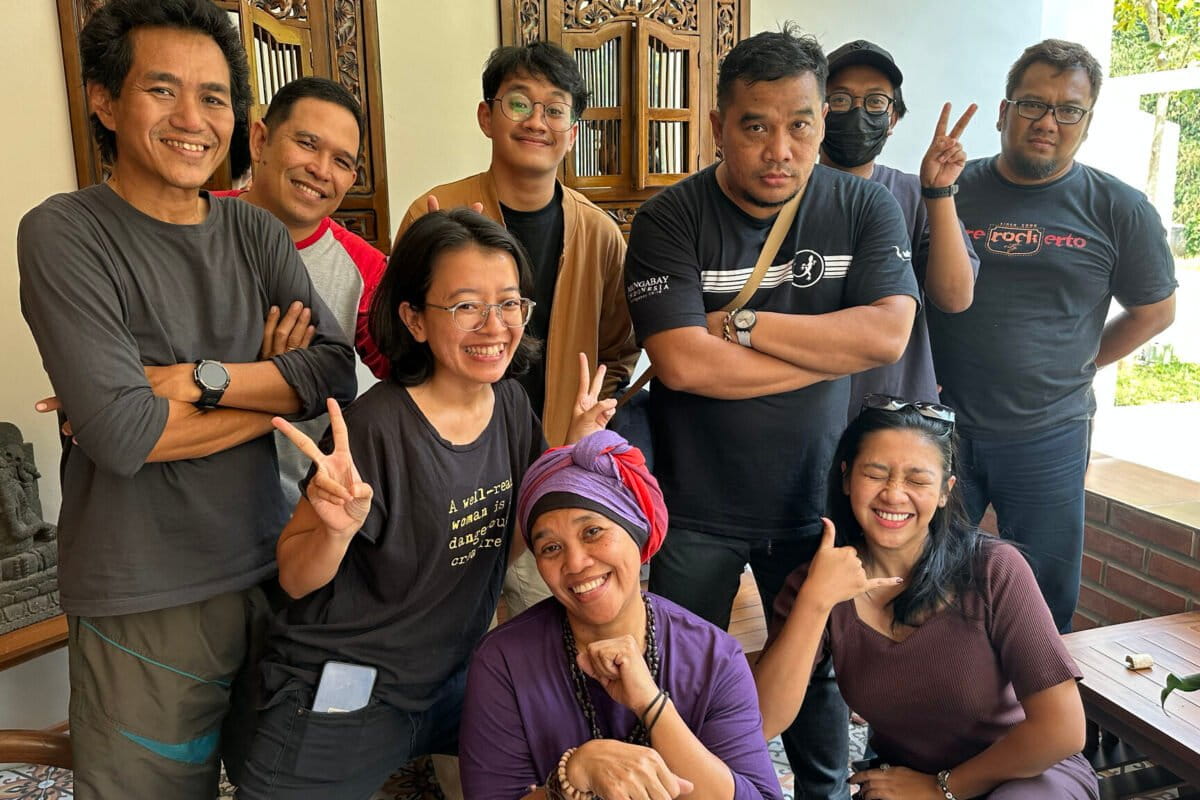
After the article was published, someone contacted me wanting to help them buy cooking utensils and provide grants for working capital. I immediately connected them with the farmers’ leader. Small things like this bring tears to my eyes.
It is a pride when the news that I write, or my colleagues at Mongabay write, has an impact and can be useful.
Another thing is that at Mongabay, I learn more and gain a lot of knowledge. For example, when I visit indigenous lands or communities, local or coastal communities, farmers, and others, it becomes a place for me to learn new things. It’s more than just coming to cover stories and write articles.
By joining Mongabay, I was able to really focus on this issue. I got to specialize in it. Often, academics, research institutions, civil society organizations, research students, government agencies, companies, and business associations would invite me to discuss current environmental issues or specific environmental topics.
Or they invite me as a speaker, moderator, or to provide input or discuss environmental issues in focused discussions. Of course, I am happy to share. I got all of this because I joined Mongabay.
Mongabay: Is there a particular project or story Mongabay has produced that you’re especially proud of? Something noteworthy or impactful?
Sapariah Saturi: There are many proud moments. A few examples, such as when Mongabay, since its establishment in Indonesia in 2012, raised the issue of the rights of the Pandumaan Sipituhuta Indigenous community, who lost their frankincense forest to a timber plantation concession near Lake Toba, North Sumatra.
Mongabay continued to publish articles on this issue, from when they were in the field facing off with the authorities, to their efforts to obtain their customary land rights. Mongabay followed the issue from North Sumatra to Jakarta, where the Pandumaan Sipituhuta community fought for their rights.
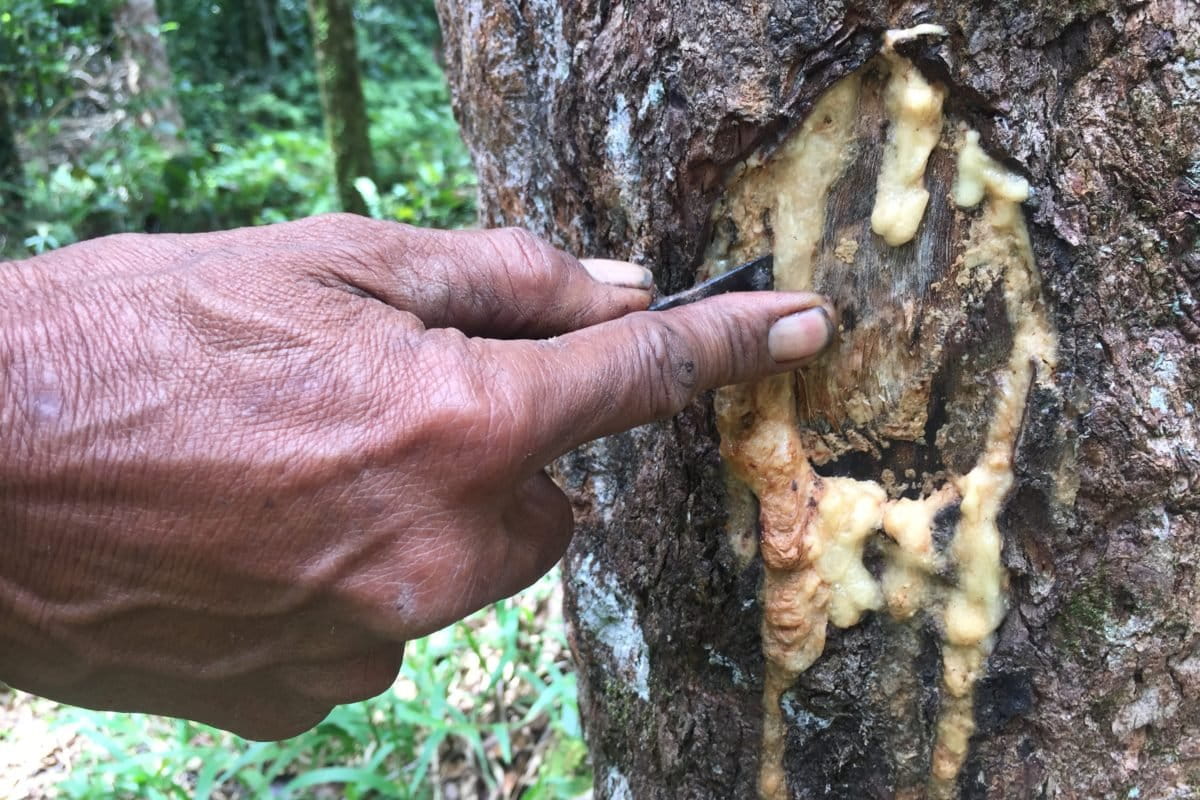
I covered their protests alongside supporting organizations, including the Indigenous Peoples Alliance of the Archipelago (AMAN) and BRWA, as well as their meetings with the government, such as the Ministry of Forestry. Mongabay wrote about these updates.
We also produced in-depth articles from the customary territories. This article also got third place in the 2014 AMAN Award. Another in-depth article on Mongabay also received a similar award in second place.
When the government changed from President Susilo Bambang Yudhoyono to President Joko Widodo, he promised to provide recognition and protection to indigenous peoples. This is also an issue that Mongabay is following.
In December 2016, President Jokowi announced the return of customary land by revoking the concession of the timber plantation company, PT Toba Pulp Lestari, to the Pandumaan Sipituhuta community covering an area of around 5,000 hectares. It was a victory despite being very small. There have been several other customary forest decisions as well.
This was the first time the state had officially recognized these areas as customary land through a decree. This was in line with a 2012 Constitutional Court ruling that stated customary forests were not state forests.
Mongabay also continued to monitor and write about the recognition of customary forests and the various forest restoration efforts undertaken by local residents.
It is touching. The voices of protest from the community, which Mongabay also raised through articles from various perspectives, have resulted in success.
There is also the issue of mining companies entering Bangka Island, North Sulawesi. Mongabay has been following this issue through in-depth coverage from the field, then continuing to follow up and raise it from various perspectives from North Sulawesi and Jakarta.

Mongabay writes from the people who are affected, from the coalition of civil society and citizens, who are members of Save Bangka Island. Also from the musician, Kaka Slank, who is speaking up about this. When meeting with the government, Mongabay also writes about the updates.
The residents’ fight also included legal action. Mongabay continued to follow the case. Finally, the residents’ lawsuit against the government was successful. The government revoked the mining permit. We were grateful that Bangka Island would not be mined.
Proudly, Mongabay continues to raise awareness about the environmental and social issues and threats facing Bangka Island, in a thorough and ongoing manner. This is a collaborative effort. The community is fighting, alongside civil society organizations that are supporting them.
Mongabay, as a media outlet, is raising awareness about the risks of allowing mining on this small island.
There are also investigative articles from the field, both those I wrote and those written by journalists individually or collaboratively. Such as the investigation into illegal lead smelting factories in East Java. Not long after Mongabay published a series of investigative articles, the Ministry of Environment and Forestry closed the factory.
Also articles about the nickel industry, from the initial exploration of mines to the construction of industrial areas, as well as when the issue of energy transition became increasingly loud and electric vehicles were seen as one of the solutions to reduce emissions. Vehicle batteries are made from nickel, among other materials.
Previously, Mongabay wrote about nickel mining issues from Jakarta. Then, I and Chris Paino, a Mongabay contributor based in Gorontalo, went to the field to write in depth and investigate the nickel industry in Morowali, Central Sulawesi, in 2014.

At that time, there were many mining companies, one of the largest being PT Bintang Delapan, which was the pioneer in establishing the nickel industrial area, PT Indonesia Morowali Industrial Park.
I went to the field to find out what was happening to the environment and the community there. When I searched on Google, the major media outlets, especially the national ones, all wrote from a business perspective and about how this investment was a great opportunity.
Not a single one wrote about what was happening on the ground to the community and the environment. Yet, from the small local media, issues emerged such as community protests over land, disasters, pollution, and others.
We went down, looked at the villages and the coastline, at a time when the company was about to build facilities. We also explored the forests that had been turned into nickel mining sites.
To this day, that article is often used as a reference. I often receive questions or requests to share information or sources from fellow journalists who are writing about similar issues today.
The same happened with coverage of the nickel industry when electric vehicles were booming. The media still wrote very little about the nickel industry in terms of its impact at that time.
We continued to write about nickel mining,and connect that to the fact that the large-scale exploitation of nickel mines and processing plants was to meet the world’s nickel needs for the latest project, the “energy transition” to electric vehicles. We keep on doing this.
Talking about nickel as a raw material for electric vehicles and linking it to conditions on the ground is important.
We started by looking at various nickel-producing areas, such as Sulawesi and North Maluku. In addition to our individual coverage, we also collaborated with civil society organizations.
In 2021, Mongabay collaborated with the civil society organization Aksi Ekologi & Emansipasi Rakyat (AEER). Mongabay went into the field, producing investigative reporting, while AEER got material for their research.
After that, more and more media outlets, both national and international, wrote about similar issues and went to Halmahera to cover the nickel industry. Sometimes, Mongabay contributors accompanied them in the field.

We also continued to write in-depth and investigative reports from Halmahera and Sulawesi, keeping up with the progress. Mongabay also collaborates with many NGOs such as the Mining Advocacy Network, Transparency International Indonesia, and others.
We also collaborate on videos. One example is Mongabay’s collaboration with Walhi Southeast Sulawesi on a short video about nickel in Torobulu, Southeast Sulawesi. This video was also produced in collaboration with WacthdoC Documentary.
Journalists are also increasingly able to obtain funding for reporting on this issue.
I, as well as Mongabay journalists that write about nickel, are often invited to be speakers, reviewing research and so on.
Mongabay: What are some of the lessons you’ve learned since joining Mongabay?
Sapariah Saturi: Many, of course. From an organizational perspective, in Mongabay I learned a lot about working in a solid team even though we didn’t meet face to face because Mongabay is a virtual office. Work doesn’t have to be done in an office, you don’t have to be present, but you can work effectively based on the results of your work. In Mongabay, I also experienced working in a cross-border organization.
Working without an office means you can work from anywhere, although there are still face-to-face meetings, but it’s not like having to go to the office every day.
A media model like Mongabay is interesting, a non-profit media that writes independently. I am sure that many can learn from an organizational model like Mongabay.
In terms of issues, I have a better understanding of how horrible environmental problems are in Indonesia. We are truly in a time of multidimensional crises that are interrelated.
This climate crisis is happening because of human greed and to satisfy human demands that are never satisfied. Once one human desire is fulfilled, another desire will emerge. The impact is the exploitation of nature and humans. If this continues, we will face doom!
In Indonesia, environmental issues are also complex, intertwined with various political and economic/business interests, and have implications for law, society, and public health. The management of licensing, forests, and land in this country is in shambles.
Worse than that, those in authority, as the makers of rules who are supposed to be the guardians and supervisors of regulations, are often also businesspeople or have relations with business. They have licenses or shares in companies that threaten the environment and society.

The problem becomes even more complicated when there is a lack of transparency and weak law enforcement. Even when regulations exist, they are more ‘effective’ when targeting the ordinary people. Meanwhile, the rights of ordinary people such as indigenous/local communities, coastal communities, farmers, and plantation workers are still neglected.
Recognition and protection of the land that is their living space is lacking. It is far from fair. The gaps in land ownership are enormous. Problems have arisen for years, not only remaining unresolved, but continuing to grow, like tangled threads.
Additionally, after Mongabay, I also try to build a commitment to myself that I am not only a voice for environmental issues, but as an individual, I must also take action so that the earth does not suffer further. Even if it is only by doing small things, such as reducing plastic waste, utilizing organic waste, planting, and so on.
Mongabay: You’ve become a prominent leader at Mongabay. Do you have any reflections on leadership?
Sapariah Saturi: I am impressed by the saying, “Be like a paddy, the more mature and full it is, the more it bows down.” The more knowledgeable or successful we are, or the higher our position, the more humble we should be.
I am egalitarian. It is only a position, a matter of sharing roles, but all parts of the organization play an important role.
Never be stingy about sharing knowledge because knowledge does not diminish; in fact, it increases when shared.
Never feel that you are smart enough. Continue to be eager to learn.
Learn wherever and from whomever you can. Learning does not have to be about following others, but when we learn, we can gain lessons from both success and failure.
Mongabay: Is there any advice you’d give to someone who wants to follow a similar path?
Sapariah Saturi: Journalism is not a place to have fun or accumulate wealth. It is a tough world, full of dynamics, demanding constant attention to keep up with changes and an open mind.
There are at least two things you need to be a writer: knowledge and courage. So, you need to have a strong interest in learning about things and keep learning and learning. Never think you know everything.
For example, when covering indigenous communities, we don’t just come to interview, finish, and go home. We don’t come acting like we are smarter and lecturing when we ask questions or talk. On the contrary, being in the field is also a place to learn from the community. We listen to their stories and understand them with empathy.
The articles we write are not just a transcription of the interview from the recording to the text.
The world of journalism also needs to be firm, have integrity, and be credible. That is the initial foundation for us and for the media.
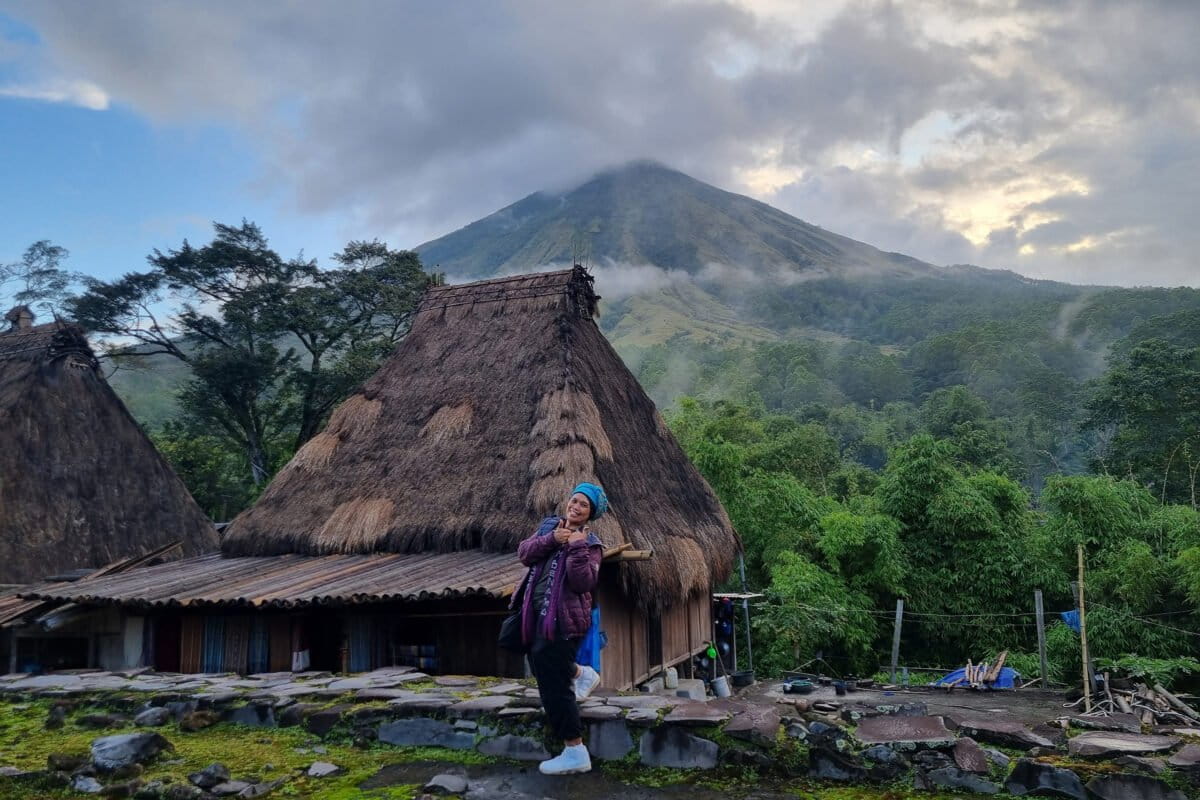
Journalists may take sides, in the context of siding with the common people or victims, or marginalized groups such as indigenous peoples, but in their work they must remain independent.
Journalists can make mistakes and should make corrections, but they must not lie. They must be transparent and honest. They must not mislead their audience.
Writing environmental news is not just about producing articles, but also about presenting facts and data with the hope of encouraging change for the better. Writing is a movement for the sustainability of the earth and its contents, including humans.


